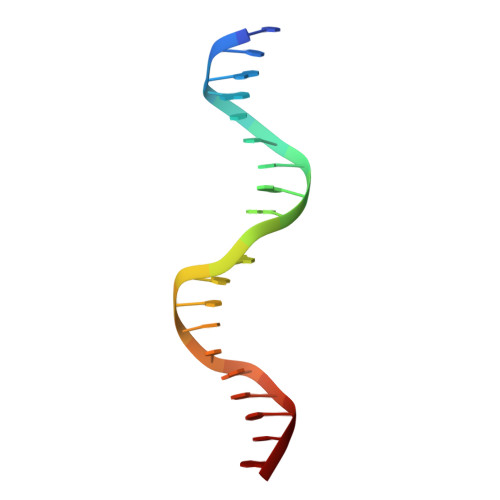Structural elements of an orphan nuclear receptor-DNA complex.
Zhao, Q., Khorasanizadeh, S., Miyoshi, Y., Lazar, M.A., Rastinejad, F.(1998) Mol Cell 1: 849-861
- PubMed: 9660968
- DOI: https://doi.org/10.1016/s1097-2765(00)80084-2
- Primary Citation of Related Structures:
1A6Y - PubMed Abstract:
The nuclear hormone receptors form the largest known family of transcription factors. The current notion of receptor DNA discrimination, based solely on one major type of hexameric half-site and a highly conserved 66-residue core DNA-binding domain (DBD), does not adequately describe how more than 150 nonsteroid receptors differentiate among response elements. Here, we describe the 2.3 A crystal structure of the DNA-binding region of the orphan receptor RevErb arranged as a tandem homodimer on its optimal response element. The structure reveals the presence of a second major protein-DNA interface adjacent to the classical one involving the half-sites. A sequence comparison of orphan receptors suggests that unique minor-groove interactions involving the receptor hinge regions impart the necessary DNA and dimerization specificity.
- Department of Pharmacology, School of Medicine, University of Virginia, Charlottesville 22908, USA.
Organizational Affiliation:



















